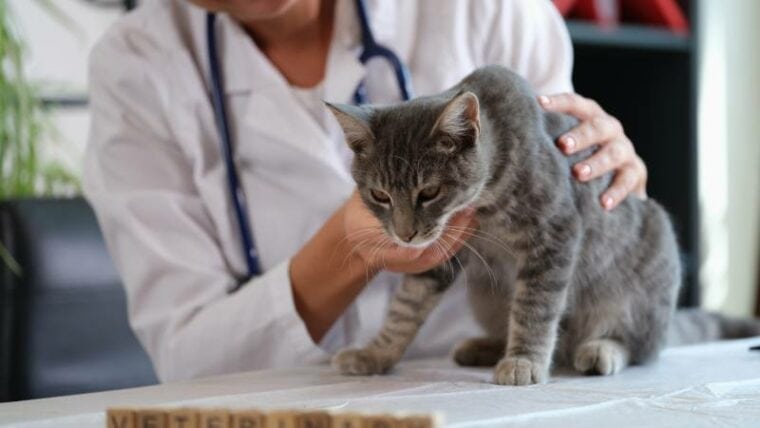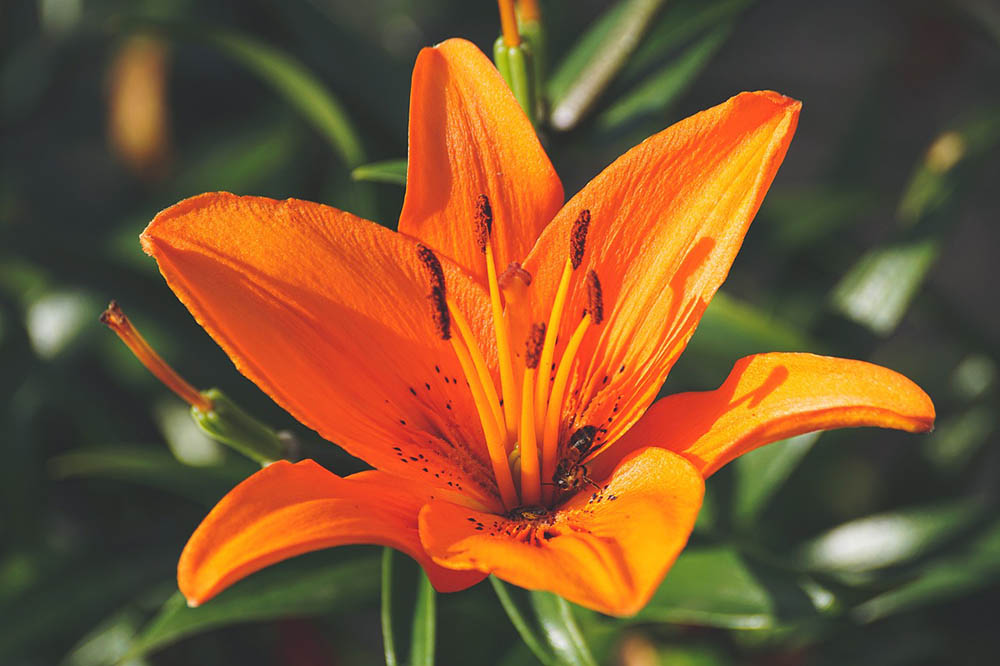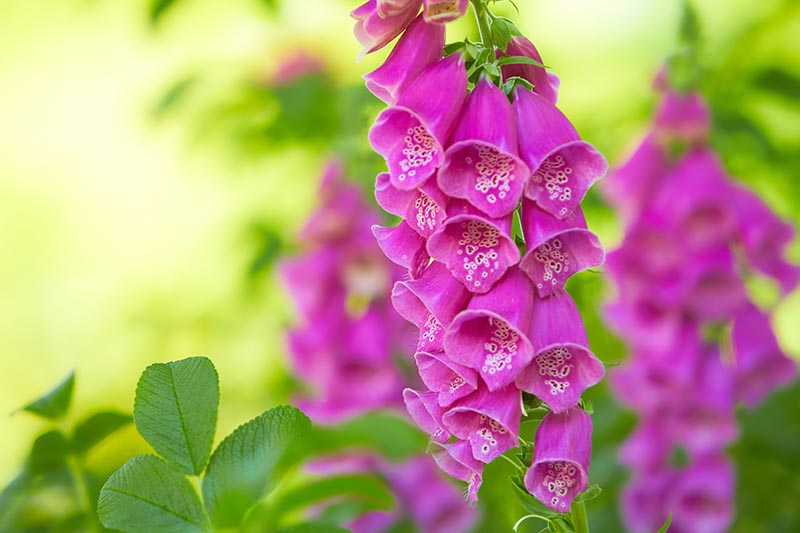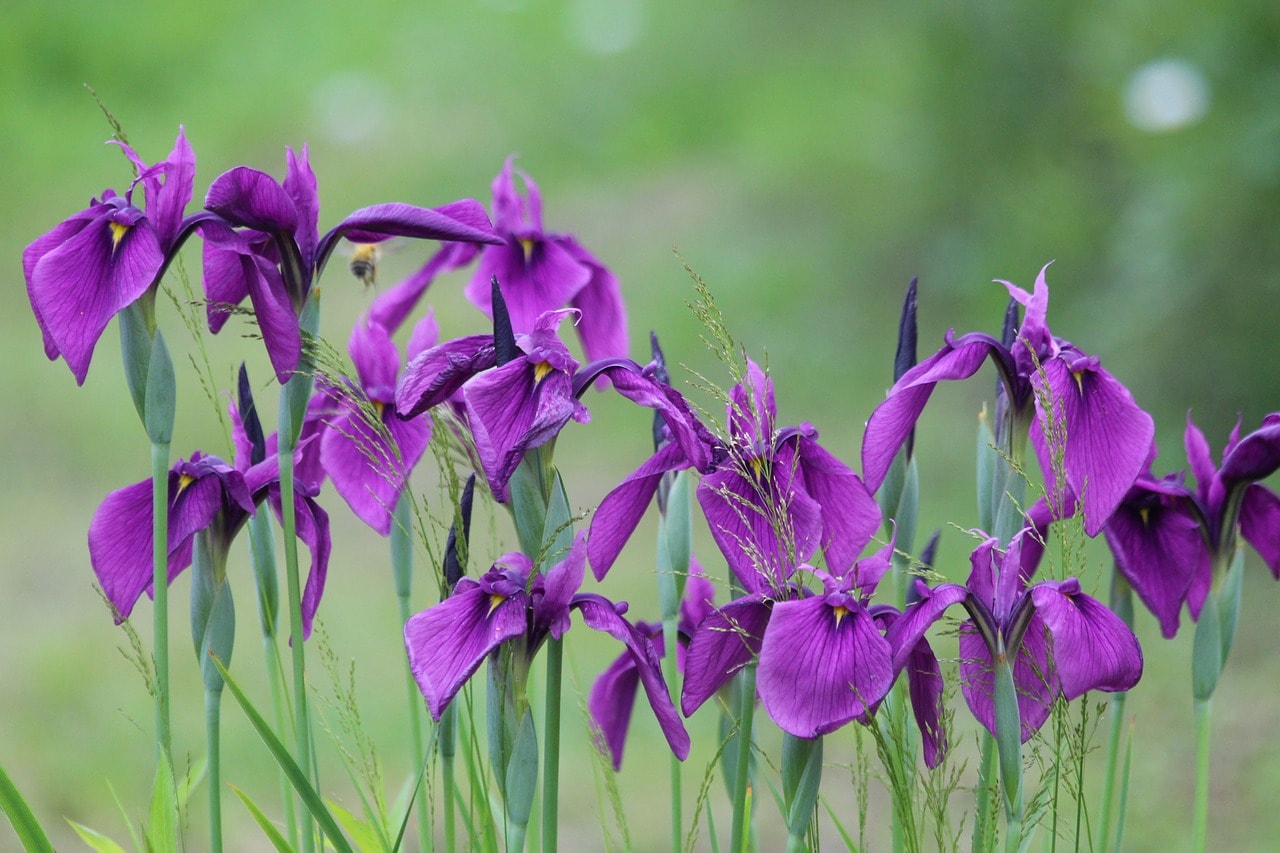
Click to Skip Ahead
Flowers add a splash of color and fragrance to our homes and gardens. They’re bright and beautiful and have the ability to instantly liven up a place. But looks can be deceiving – many flowering plants that may seem harmless contain toxins that make them dangerous, and even deadly, to cats.
Although cats are picky eaters, their curious natures and fastidious grooming habits put them at risk of poisoning by these toxic flowers. Young, inquisitive cats and kittens are particularly at risk of eating flowers that are toxic, as are indoor cats that may be bored. By knowing which flowers are toxic, you can help keep your cat safe.
Below are 14 common flowers that are toxic to cats.

The 14 Flowers That Are Toxic to Cats
1. Lily

While lilies are beautiful to look at, they’re unfortunately highly toxic to cats. Lilies (Lilium, also known as ‘true lilies’) and Day Lilies (Hemerocallis) can cause severe kidney failure and even death if ingested.
All parts of the plant are toxic to cats. Kidney failure can occur if a cat nibbles on the flowers, stem, or leaves, or drinks water from a vase containing cut lilies. Grooming pollen from their coat has also been known to cause lily toxicity in cats.
The toxin, which only affects cats, has not been identified. If a dog ingests lilies, they won’t develop kidney failure, although they may develop a minor stomach upset.
The signs of lily poisoning include:
If you think your cat has eaten any part of a lily, it’s important to seek veterinary attention right away. The toxic effects from lilies occur rapidly so the sooner a cat receives treatment, the better their chances of recovery.
2. Lily of the Valley

Despite the name, the lily of the valley is not a lily. Instead, this plant belongs to the same plant family as asparagus. This, however, doesn’t mean it’s safe to eat!
All parts of the lily of the valley plant are highly toxic to cats as they contain chemicals known as cardiac glycosides. Cardiac glycosides interfere with the electrolyte balance within the heart muscle and disrupt the normal activity of the heart.
The signs of lily of the valley poisoning include:
3. Oleander

Nerium oleander is a popular ornamental garden plant. It’s unfortunately highly toxic to cats. Like lily of the valley, oleander contains cardiac glycosides.
All parts of the plant, including the leaves, stems, flowers, fruit, and roots, are toxic and only small amounts of the plant need to be eaten to cause clinical signs of toxicity.
The signs of oleander poisoning include:
4. Foxglove

Foxglove is an eye-catching plant with trumpet-like blooms. While it may be beautiful, cat owners should be aware that these flowers are highly toxic to cats. Just like lily of the valley and oleander, foxglove contains cardiac glycosides. All parts of the plant are considered toxic.
The toxins in these plants are similar to digitalis or digoxin, a common heart medication used in both human and veterinary medicine.
If ingested, foxglove can cause the following signs:
5. Azalea

Azaleas are popular due to their brightly colored blooms and long-lasting flowers. While azaleas are pleasing to the eye, their effects are anything but.
All parts of this plant are considered poisonous to cats. The toxins responsible for the poisonous effects of this plant are grayanotoxins. Grayanotoxins cause gastrointestinal and cardiovascular effects.
Common signs of azalea toxicity include:
6. Amaryllis

Even though the amaryllis is a part of the Liliacea family, it’s not a “true” lily and doesn’t cause kidney failure in cats. This, however, doesn’t mean that it’s safe to keep amaryllis in your home or garden if you’re a cat owner. Amaryllis contains phenanthridine alkaloids which are toxic to cats. The leaves, stem, and bulbs are considered toxic.
Signs of amaryllis toxicity include:
7. Tulip

Tulips are one of the world’s most popular and recognizable flowers. Unfortunately, as a cat owner, it’s best not to bring them into your home as they’re toxic to cats.
Tulipalin A and B are to blame for the tulip’s toxicity. All parts of the plant are toxic, with the highest concentration of toxin found in the bulb.
The clinical signs of tulip toxicity depend on the amount of plant consumed. If a cat chews on any part of this plant, it may cause profuse drooling as tulips cause irritation to the mouth or esophagus (food pipe). More severe signs are seen if larger amounts are ingested.
Typical signs of tulip toxicity include:
8. Hyacinth

Hyacinths are popular spring bulbs with a pleasant fragrance that belong to the same family as tulips and amaryllis (Liliaceae family). Hyacinths are also toxic to cats.
These flowers contain allergenic lactones. While the whole plant is considered toxic, the highest concentration of toxin is found in the bulb.
If ingested, hyacinths can cause the following signs:
9. Autumn Crocus

Despite its toxicity, the autumn crocus is a popular house and yard plant. Autumn crocus is also a member of the Liliaceae family and is highly toxic to cats.
All parts of this plant are considered toxic due to a toxic alkaloid known as colchicine. If ingested, autumn crocus can cause severe gastrointestinal signs, liver and kidney damage, respiratory failure, central nervous system signs like seizures, and even death.
Other signs of autumn crocus toxicity include the following:
10. Chrysanthemum

Chrysanthemums (also known mums) are popular flowers that are mildly toxic to cats.
Chrysanthemums contain several different substances that are responsible for their toxicity, including sesquiterpene, lactones, and pyrethrins. Pyrethrins are insecticides that are used in dog tick and flea medications.
Common signs of chrysanthemum toxicity include:
11. Hydrangea

Hydrangeas come in a wide array of colors, making them popular as ornamental garden plants. Unfortunately, they’re mildly toxic to cats. Hydrangeas contain a toxin known as cyanogenic glycosides. Although the whole plant is considered poisonous, the highest concentrations of toxins are found in the leaves and flowers.
If ingested, hydrangeas can cause the following signs:
12. Daffodil

Nothing heralds spring quite like the cheerful daffodil! But cat owners beware; these flowers are toxic to cats.
The whole plant is toxic, especially the bulb, due to a toxic compound known as lycorine. Lycorine has strong emetic qualities, meaning that it triggers vomiting.
Common signs of daffodil toxicity include:
13. Bird of Paradise

The bird of paradise is an exotic looking plant with a unique flower that resembles a bird in flight. It’s mildly toxic to cats as it contains gastrointestinal irritants found mainly in the fruit and seeds. Even though the flower’s level of toxicity is considered to be mild to moderate, these flowers should be kept away from your cat.
If ingested, it may cause the following signs:
14. Irises

Irises are popular flowers known for their wide variety of colors and petal shapes. They are, however, mildly toxic to cats as they contain toxic compounds known as pentacyclic terpenoids. These toxic compounds are found in all parts of the plant with the highest concentration in the rhizomes. A rhizome is an underground plant stem that grows horizontally, producing roots and shoots from its nodes, allowing the plant to spread and propagate vegetatively.
Typical signs of iris toxicity include:

How to Prevent Flower Toxicity in Cats
In the case of poisoning, prevention is better than cure. It’s best to keep toxic flowers out of your home and garden if you own a cat and to research any flower that you plan to bring into your home or garden to ensure that it’s non-toxic.
The American Society for the Prevention of Cruelty to Animals (ASPCA) provides a comprehensive list of toxic and non-toxic plants that can be accessed here.
If you suspect that your cat has ingested a toxic flower, it’s advisable that you seek immediate veterinary attention. As a general rule, the sooner a cat receives treatment, the better the prognosis.

Conclusion
It’s crucial for cat owners to be aware of the potential dangers that certain flowers pose to our feline friends. Although the 14 flowers listed above are some of the more common flowers that are toxic to cats, there are others that may cause poisoning if ingested.
By educating ourselves about toxic flowers and taking appropriate precautions, we can create a safe environment for our feline friends, allowing them to live healthy and happy lives.
Featured Image Credit: Ruel Madelo, Pexels







